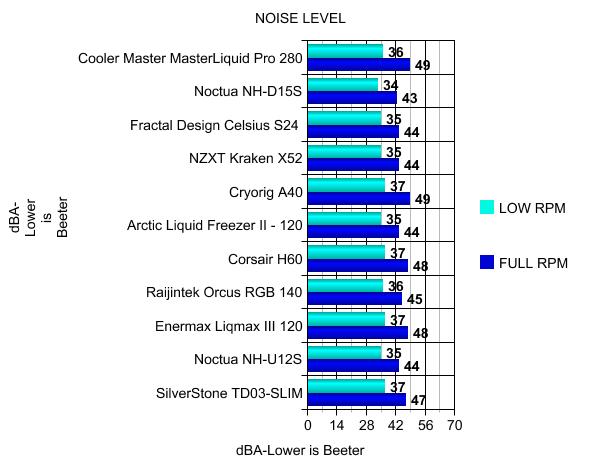-
Arctic Liquid Freezer II - 120
Introduction
The world of All In One liquid cooling it's fair to say that there's not a lot of fresh these days. Different fans, OLED screens on the pump, a bunch of RGB, but only a few have added something really useful that targets more than just the CPU. ARCTIC has released its Liquid Freezer 2 and it aims to add itself to this shortlist of AIO liquid coolers that care about your VRM temperatures. The series is called Liquid Freezer II and includes four models: Liquid Freezer II 120, Liquid Freezer II 240, Liquid Freezer II 280 and Liquid Freezer II 360. From the names of the LSS it is easy to guess that the difference between the models lies in the size of the radiator and, therefore, in the dimensions and the number of Arctic P fans. Other components are the same. What sounds like fine-tuning at first is actually accompanied by major changes. With the new AiO cooling solution, the manufacturer does without double-sided ventilation. In return, Arctic installs a 40 mm fan, which is located on the pump or the CPU block. It should ensure that the voltage converters in the area of the CPU are supplied with fresh air. It remains exciting to see how the 40-millimeter radial fan affects the volume of the cooling solution.

LSS Liquid Freezer II is compatible with all common AMD and Intel sockets.

Packaging & Contents
The Liquid Freezer II - 120 is packaged in a blue box. It's a fairly small box and the internals are just enough to keep the contents safe during transport. The front side of the packaging is covered by a profile photo of the cooler with the warranty and name of the product printed on the left side. There is also an QR code for product information.

Printed on the rear, there are various images of the key feature of the cooler.

The left-hand side of the box shows what Arctic call a function diagram detailing the various components of the cooler, with full specification and dimensions above.

Arctic supply an compliments leaflet and a card with a QR code, which you can scan to take you to the support page online where you will find a digital version of the installation manual.


The scope of delivery also includes backplate, two metal plates, screws for mounting on an Intel/AMD and some MX4 thermal paste.



A Closer Look
The Liquid Freezer II cooler come with an almost all-black design and a radiator with a clean "square" design. The overall design of the pump/block/fan combo looks like batmobile. The fan arrive pre-installed to the radiator in a push configuration so will save the end-user time during installation if this is their desired configuration. It comes filled with coolant from the factory so even those with the most basic skills needn't fuss with initial setup. Essentially all one needs to do to install is mount the radiator and cooler and plug in. The system, with this configuration, does not require maintenance by the user and is guaranteed for a total of 2 years.

The radiator is 38 mm thick. This additional thickness does improve the cooling potential of the AIO.

An Arctic A logo is applied the top and bottom edges of the radiator.


The radiator's tubing is approximately 450 mm long. The outer diameter of the tubes is 12.4mm, the inner diameter is 6mm. The braided coolant hoses to the CPU block come with silver striping. On either ends of the tubing are high-quality metal fittings with a black chrome look.

The Arctic P12 120mm fan on the unit come with PWM control, which allows it to run at speeds down to just 200 RPM, and all the way up to 1800 RPM when required.

The PWM-cable of the fan is integrated into the sleeveless tubing. Here is the single 4-pin cable from the pump which must be connected to the motherboard fan header.

The Liquid Freezer II Series features an all-new, in-house developed PWM-controlled pump for improved efficiency, low power usage, and quiet operation. Unlike most pumps, which run at full load even when idle, ARCTIC's pump is able to slow down and reduce noise even further when not under heavy loads. The CPU block is made of plastic, and there's the manufacturer's logo on it. The pump has a working frequency between 800 and 2000rpm. Most notably, however, the CPU block comes with a small 40mm fan, which will provide some airflow to the components surrounding the CPU socket. This fan can spin at speeds between 1000 and 3000 RPM through PWM control. This area typically sees very little airflow on other liquid cooling systems. Cooling to this area isn't strictly necessary, as case airflow and passive convection for heat dissipation is often just enough. Any motherboard that generates too much heat in the VRM areas will often come with some small heatsinks to aid this process. Nevertheless, some added cooling here certainly can't hurt anything aside from noise levels.

The water block has a copper base, with dimensions of 98 mm (L) x 78 mm (W) x 53 mm (H). The base of the block does not have a mirror finish.

Installation Process
When installing the Liquid Freezer II, users will need to first prepare the backplate. Slide the screws into the right slot on the backplate to then use the washers to secure them. At this point, you can position the backplate on the motherboard.


Next, use the washers and standoffs to secure the backplate to the motherboard.


Then secure the mounting arms to the standoffs.

Threaded holes are provided for thumb nuts on the cooler mounting bridge. With this, the heatsink itself is now properly secured.

The final and easy bit is to plug it into the fan header. That's it, all done.


Thanks to its flat design and compact pump, the Liquid Freezer II fits into many cases and offers optimal RAM compatibility, even for modules with larger heatsinks.


Test System & Methology
Test System:
Cpu:Intel Core i7-6700K@4.6 GHz.
Motherboard:Gigabyte G1.Sniper Z170
Memory:16Gb Corsair Vengeance LPX DDR4 2666Mhz
Graphics Card: EVGA GeForce GTX 1080 Ti 11GB SC2
Power Supply: EVGA SuperNova 1200 P2
Storage Drive: 3TB Seagate Barracuda
Boot Drive: SSD 850 PRO 2.5" SATA III 2TB
Chassis: Dimastech Bench Table Easy V2.5
Windows 10 64-bit

Software:
Speedfan
CPUID HW Monitor 1.23
CPUID CPU-Z 1.65
Prime 95
I am testing the performance as follows:
Ambient temperatures are kept at 23C throughout my tests.
The CPU Fan is set to 100% to eliminate inconsistencies as a result of PWM control.
Idle temperatures are obtained after booting the PC and idling on the desktop for 30 minutes.
Load temperatures are obtained after running Prime 95′s for 30 minutes.
Temperature
Our first test will be Stock Idle test. This is taken on the Windows desktop an hour after initial boot up. During the idle tests, the Arctic Liquid Freezer II - 120 proved to be very efficient. While things do get a little warmer when overclocked the Arctic Liquid Freezer II - 120 again performs excellently well. It does admittedly struggle a little more than it does when under a standard processor setting, but even so, this cooler proves itself more than competent at overclocking and even capable of competing with much more expensive 240mm AIO cooler options.

Once the cooler was placed under OC, the Liquid Freezer II - 120 began to show its Arctic heritage. Arctic's Liquid Freezer II - 120 doesn't deliver the lowest temperature, but that's no bad thing as the it strikes an admirable balance between heat and noise. If we look at these results the Liquid Freezer II - 120 is pretty much on par with Cryorig's A40, which is a 240 mm cooler.

Noise Level
I couldn't do all of this testing without taking a look at the overall noise output of each of the coolers right? The Liquid Freezer II - 120 combines cool temperatures and low noise.

Final Thoughts
These days all of these all-in-one coolers are very much a like, but Arctic has done some things with the Liquid Freezer II to separate it from many of the other coolers out there. The build quality is immediately impressive, with a thick and nicely finish radiator, one very good quality fan, and a batmobile look pump/block combo design. The Arctic Liquid Freezer II - 120 may appeal to minimalists as it does not feature any RGB of any kind. The lack of RGB is going to be welcome by quite a few but the cabling will likely make this one of the more first time friendly AIO coolers out there with all of the cabling integrated through the sleeved tubes so as to have an exceptionally clean look. But, if you choose to replace the well designed ARCTIC P-fan you'll be free to as there is a header for the radiator fan for those curious. The performance is certainly impressive, and it managed to stay pleasantly quiet throughout our testing. The fan performance is excellent, generating barely a whisper, which means you can comfortably up the RPM if you wanted to and squeeze out some extra performance, without a big sacrifice on acoustics. Of course, if you plan to use system memory with massive heatsinks, the Liquid Freezer II - 120 offers exceptional clearance. For mini-ITX users, there is no need to fear as the Liquid Freezer II - 120 does not block the expansion slot either. As such, clearance is basically perfect. So if small form factor is your thing and you want an AIO that adds a bit more, the Liquid Freezer II - 120 from Arctic is a good option. It will not only cool the CPU but also offers additional cooling to the VRM, GPU, and surrounding area in a confined space. 38mm thick radiator does a lot for boosting cooling efficiency, but on the other hand, you need to doublecheck your clearance. The only other thing that springs to mind is the lack of software control, which I myself find unnecessary, though some might miss the feature. Simply set up a "fan speed" profile for this device in your mobo's BIOS and it will take care of balancing water pump vs cooling fan speed for you. All without needing to install and configure a dedicated software application.

Overall, I am impressed by what Arctic offers with the Liquid Freezer II - 120. Pricing is starting at an attractive EUR 64 for the 120mm model and will go up from there. This is a good price given the coolers features. To compare, the Cryorig A40, which performs about the same, is EUR 100 and Corsair's H60 is EUR 80. Arctic have ditched all the RGB flair, but in return you get a cooler that gets the job done, with no unnecessary features, and no frustrating software.

Last edited by testman78; 11-26-2020 at 01:41 AM.
-
I really can't tell from your pics what the actual orientation of your case is but if the normal orientation is like the top pic or even the bottom pic it may impact results. If thats the top view in pic 1 also may impact results.
heatware
chew*
I've got no strings to hold me down.
To make me fret, or make me frown.
I had strings but now I'm free.
There are no strings on me
-
The Chassis on test is Dimastech Bench Table Easy V2.5.
The pic on Phanteks Evolv Shift Air Mini ITX Tower Case was taken in order to see that it fit on mini-ITX cases without clearance problems.
 Posting Permissions
Posting Permissions
- You may not post new threads
- You may not post replies
- You may not post attachments
- You may not edit your posts
-
Forum Rules







































 Reply With Quote
Reply With Quote


Bookmarks